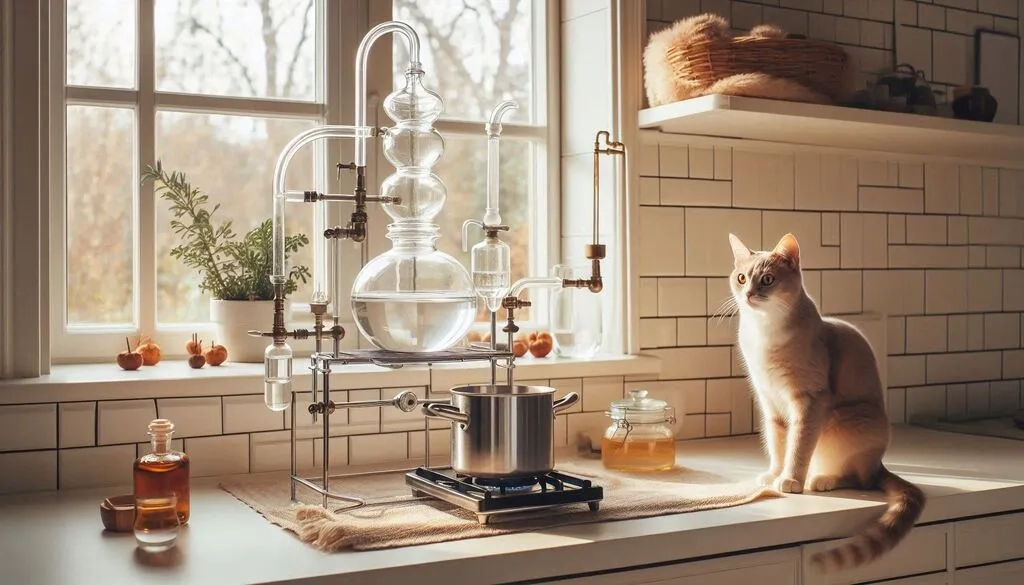
It is crucial to understand how to make distilled water at home since, by simply switching to tap water instead of buying bottled water, we may reduce our environmental impact by 3500 times (Euronews. 2021). The universal solvent is commonly referred to as water. Minerals, salts, and organic compounds are just a few of the substances that are dissolved by water as it travels underground or across the land. Under some conditions, water can dissolve metals in home plumbing systems, contaminating the water. Water can include microbiological organisms, and contaminants can also result from human activity (such as improper application of pesticides or fertilizers). Homeowners are thus looking for methods of drinking water purification. One of the earliest methods of water purification is distillation. Boiling water produces steam, which is subsequently condensed and collected as distilled water in distillation devices. (Virginia Household Water Quality Program. 2019).
It has been stated that distillation devices may remove salts, arsenic, and trichloroethylene (a popular dry-cleaning solvent), in addition to nitrates, germs, microbes, and metals like iron and lead. More pollutants can be eliminated during distillation than with activated carbon filters. Only reverse osmosis systems and distillers, according to the US Environmental Protection Agency, may be referred to as water "purifiers". All other systems are categorized as "treatment" systems for water. However, benzene and toluene, which have lower boiling points than water, are not eliminated during the boiling process. (TERRAFORMS. 2003).
Making distilled water at home has several systems and devices, such as manual or automatic systems and countertop or under-counter water distillers, which will be examined in this article. Because the economic and environmental costs of energy consumption are the most challenging problems of making distilled water, solar home water distillers will be discussed at the end of this article.
1. Traditional Distillation Method
The traditional method is the easiest way to make distilled water, but at the same time, it is the most expensive type in terms of energy use. This method of water distillation is widely used for household purposes. This method suffers from requesting a very large amount of energy to evaporate the saline water due to the high latent heat of water vaporization of about 2257 kJ/kg at 100 ◦C. As a result, the traditional method is suitable only for making a small amount of water at home (Saidur et al. 2011).
How to make distilled water with the traditional method at home with a pot is explained in the figure below. It is better to use stainless steel pot, which can fully guarantee the quality of distilled water.
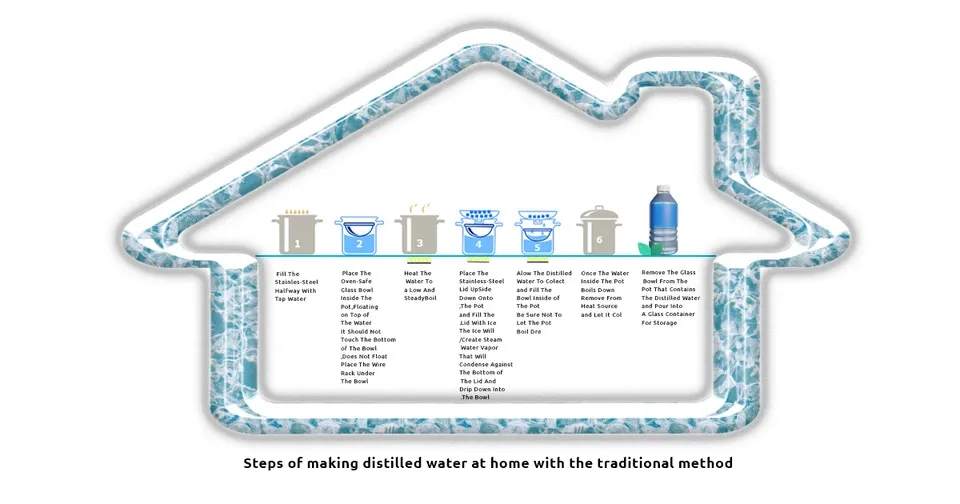
If you want to distill water at home or during a picnic, it is recommended to buy a coiled copper or stainless steel tube. This will allow you to produce distilled water at a faster rate.
Steps of Making Distilled Water at Home with The Traditional Method
1. Fill the stainless-steel pot halfway with tap water.
Place the oven-safe glass bowl inside the pot, floating on top of the water; it should not touch the bottom of the pan. If the bowl does not float, place the wire rack under the bowl.
3. Heat the water to a low and steady boil.
4. Place the stainless-steel lid upside down onto the pot, and fill the lid with ice. The ice will create steam/water vapor that will condense against the bottom of the lid and drip down into the bowl.
5. Allow the distilled water to collect, and fill the bowl inside of the pot. BE SURE NOT TO LET THE POT BOIL DRY.
Once the water inside the pot boils down, remove from heat source, and let it cool.
Remove the glass bowl from the pot that contains the distilled water, and pour into a glass container for storage.
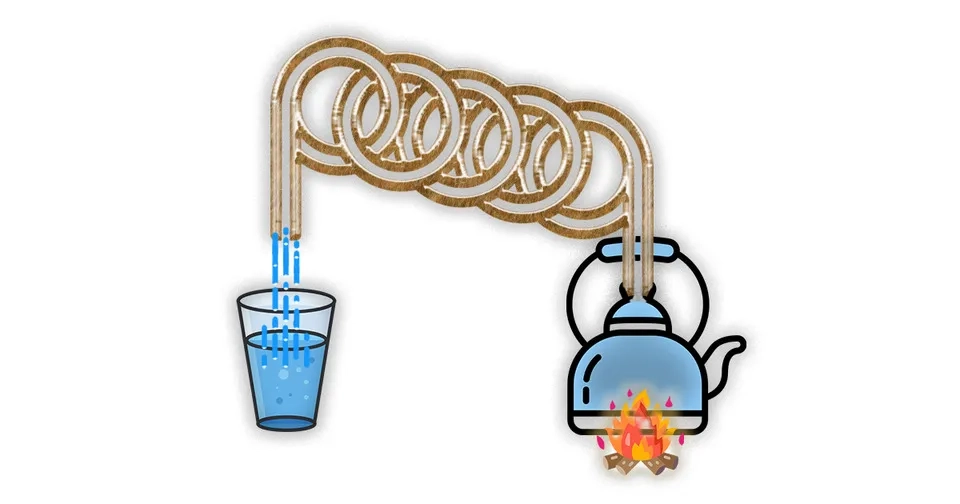
2. Home Water Distillers on the Market
Home water distillers can generate more distilled water and are more effective than the traditional method. Water distillers are often point-of-use rather than point-of-entry systems due to the low production rate of distilled water. They range in size from small, round countertop units that can only distill slightly over a quart of water an hour to larger, rectangular carts that can distill around a half gallon of water an hour. Systems might be totally or partially automated or manual. Before deciding to purchase home water distillers, homeowners should determine how much distilled water they actually need (Saha et al. 2023).
Typically domestic water distillers use air-cooling techniques for the condensing stage but almost all of them use electric power for boiling water and need regular maintenance. On the market water distillers are categorized as countertop water distillers, under-counter water distillers and standing distillers. If you want to allocate a small budget for making distilled water, alcohol still kits may be an ideal alternative.
2.1. Countertop Home Water Distiller
Countertop water distillers are small, portable water treatment devices designed to be placed on the kitchen counter. They serve as an ideal option for producing distilled water at home due to their affordability and user-friendly nature. Typically, these devices come in two common variations available in the market: stainless steel thermal baffles with either glass or plastic water storage. The plastic variants are lightweight and convenient for distilling water during travel or on-the-go situations. To provide a visual understanding, the accompanying figure demonstrates the operational mechanisms of the two types of countertop water distillers. (Review Infinite, 2023).
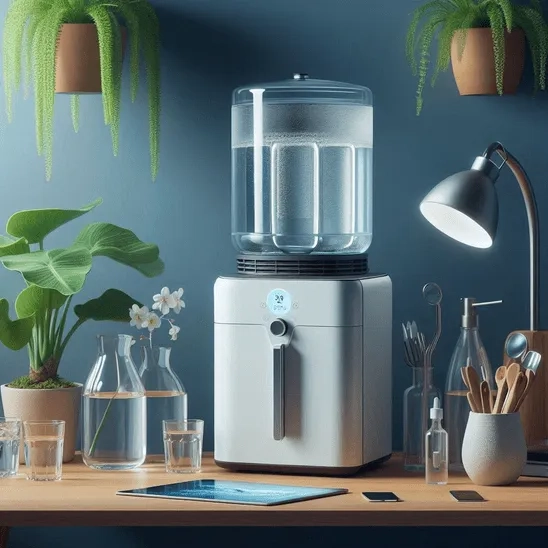
2.2. Under-Counter and Standing Home Water Distiller
Greater amounts of water can be distilled using under-counter and standing water distillers, but they require more space in the home. They are a good alternative for customers because the majority of them operate automatically, and don't require operators to refill them. Most of the countertop water distillers have carbon filters after the distillation process although the under-counter and standing models contain carbon filters for both pre- and post-water treatment (Bailey Line Road. 2020).
3. Solar Water Distiller
If you're wondering how to make distilled water, consider that nature uses solar energy to distill water constantly. For ages, humans have employed fossil fuels to produce distilled water. It's time to change our habits and act more like nature, and perhaps the best place to start is at home.
A conventional solar still is a box with a glass roof, referred to as a glaze, set at an angle from the horizontal to ensure optimal sun exposure. This angle is roughly equal to the latitude of the location. The distiller faces south if in the northern hemisphere, or north in the southern hemisphere. The domestic solar water distiller is an airtight basin constructed out of mild steel. The inner surface of the rectangular base is blackened to efficiently absorb the solar radiation, incident at the surface (Hassan et al. 2017).
Solar water distillers don't generate dangerous gases that will harm the Earth since they are extremely straightforward, inexpensive, and don't need high-quality energy. Solar stills are very simple to construct and run. Finally, for homes and small towns, using solar energy to distill water can be more affordable. The efficiency of solar water distillers at home may be increased using some methods, including the addition of photovoltaic panels and the use of heat exchangers (Chandrashekara et al. 2017; Tigrine et al., 2021).
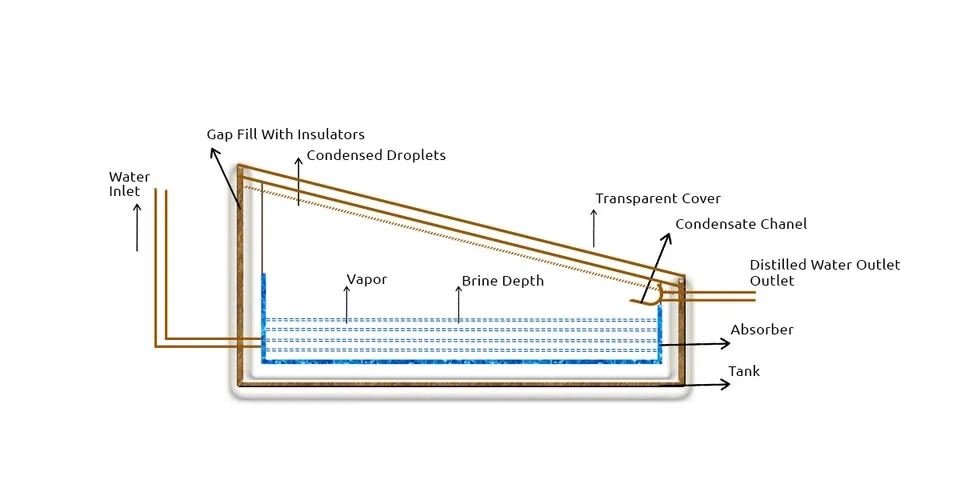
4. Conclusion
There are several ways to make distilled water at home. The simplest one is the traditional method, which is less effective compared to the home water distillers currently available on the market. Calculating the amount of distilled water consumed in your home is the initial step toward deciding on a suitably manufactured water distiller. In certain cases, opting for a solar water distiller could be an excellent choice. This is because the production of distilled water domestically requires significant energy consumption and has adverse effects on the environment.
